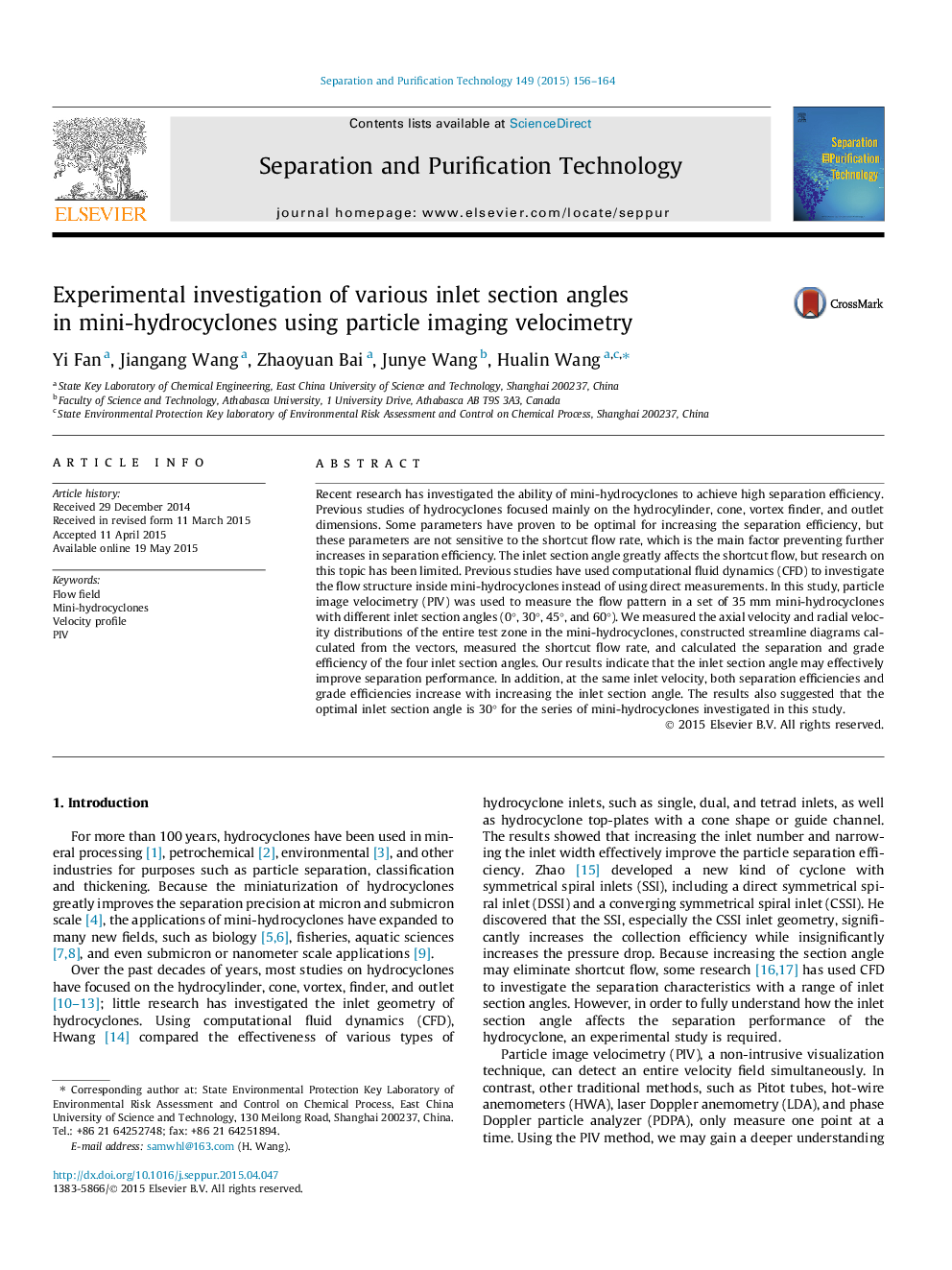| Article ID | Journal | Published Year | Pages | File Type |
|---|---|---|---|---|
| 640577 | Separation and Purification Technology | 2015 | 9 Pages |
Abstract
Recent research has investigated the ability of mini-hydrocyclones to achieve high separation efficiency. Previous studies of hydrocyclones focused mainly on the hydrocylinder, cone, vortex finder, and outlet dimensions. Some parameters have proven to be optimal for increasing the separation efficiency, but these parameters are not sensitive to the shortcut flow rate, which is the main factor preventing further increases in separation efficiency. The inlet section angle greatly affects the shortcut flow, but research on this topic has been limited. Previous studies have used computational fluid dynamics (CFD) to investigate the flow structure inside mini-hydrocyclones instead of using direct measurements. In this study, particle image velocimetry (PIV) was used to measure the flow pattern in a set of 35 mm mini-hydrocyclones with different inlet section angles (0°, 30°, 45°, and 60°). We measured the axial velocity and radial velocity distributions of the entire test zone in the mini-hydrocyclones, constructed streamline diagrams calculated from the vectors, measured the shortcut flow rate, and calculated the separation and grade efficiency of the four inlet section angles. Our results indicate that the inlet section angle may effectively improve separation performance. In addition, at the same inlet velocity, both separation efficiencies and grade efficiencies increase with increasing the inlet section angle. The results also suggested that the optimal inlet section angle is 30° for the series of mini-hydrocyclones investigated in this study.
Keywords
Related Topics
Physical Sciences and Engineering
Chemical Engineering
Filtration and Separation
Authors
Yi Fan, Jiangang Wang, Zhaoyuan Bai, Junye Wang, Hualin Wang,
